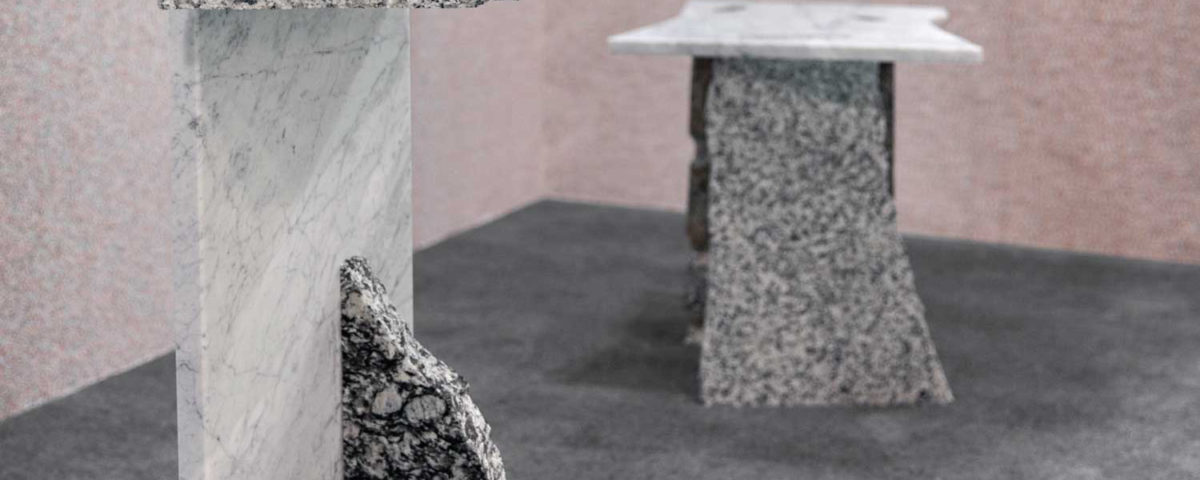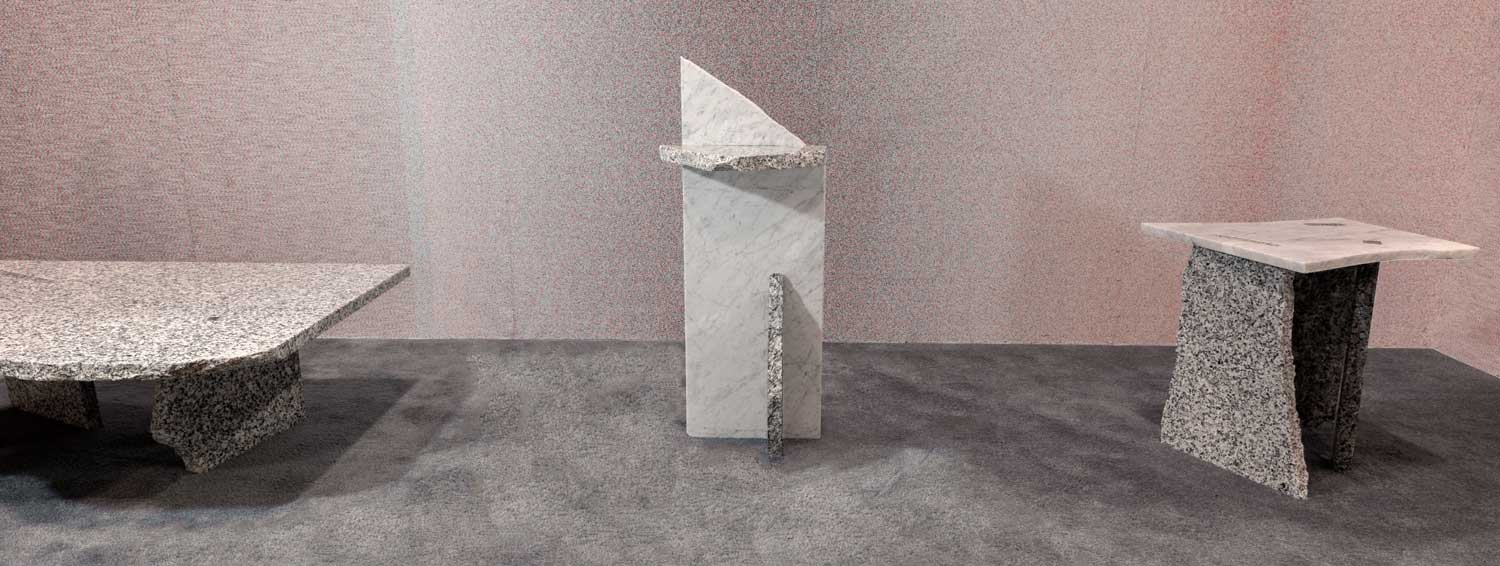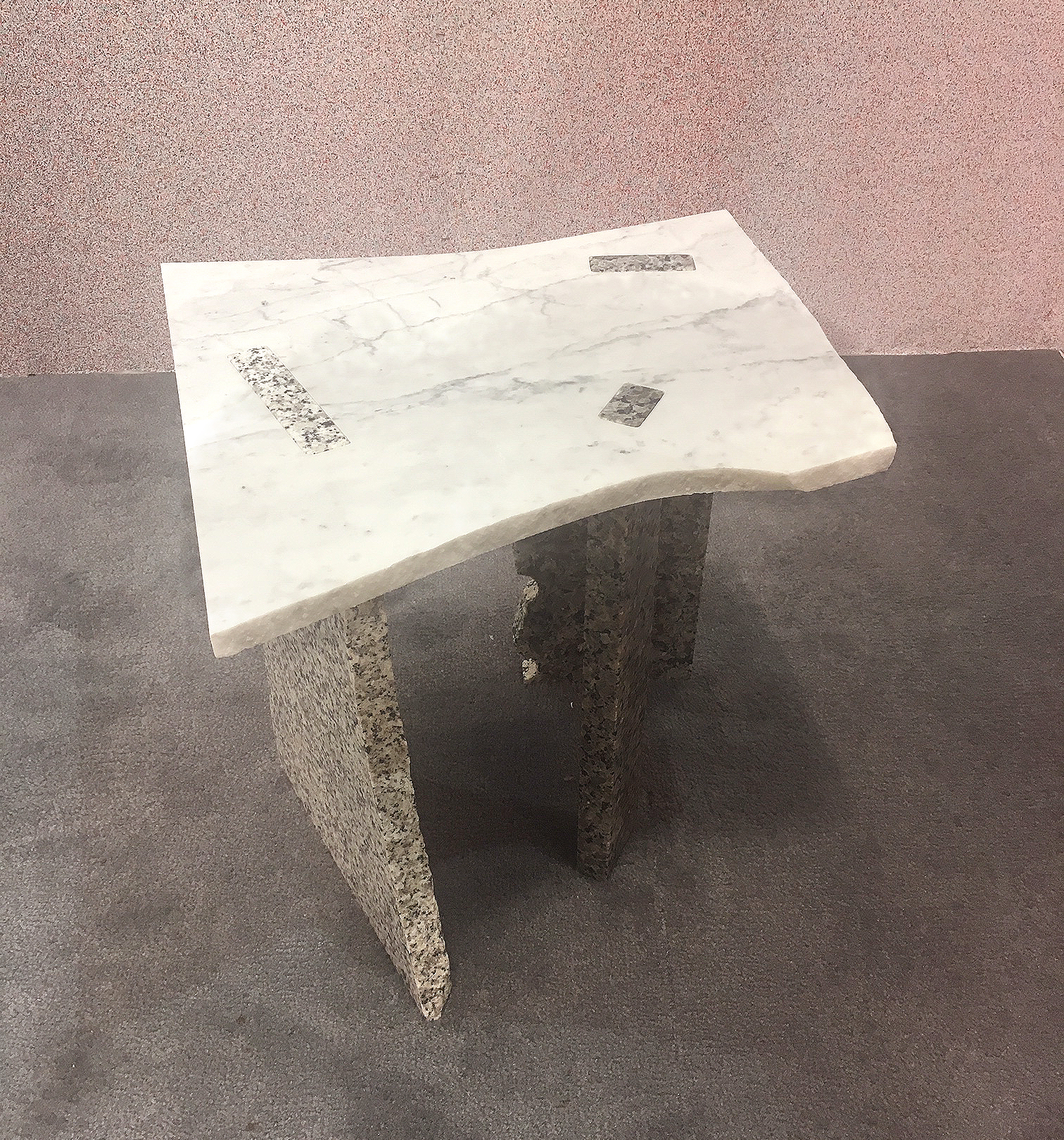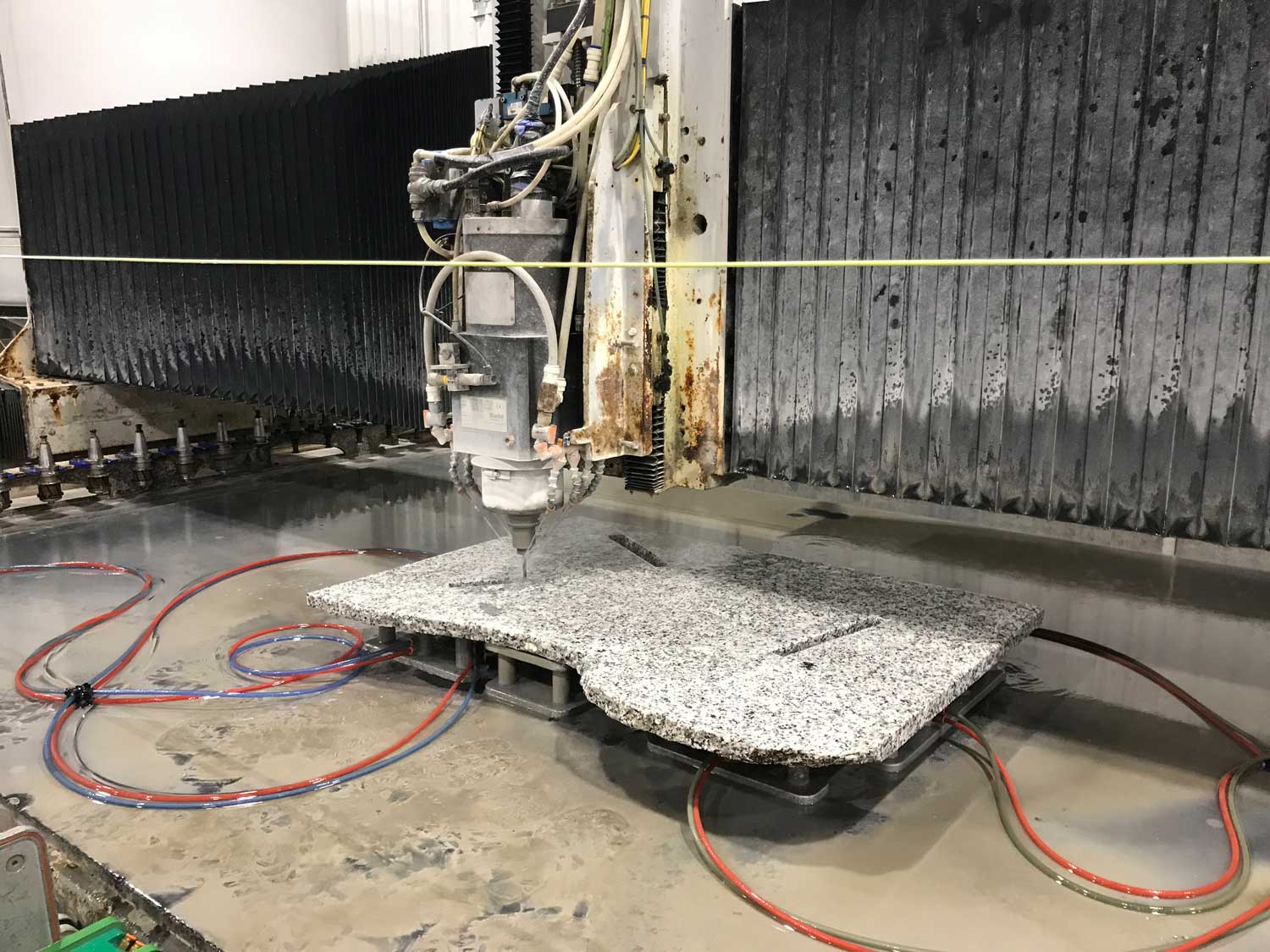Quintus Kropholler

“People perceive design as a cost. But it offers a solution for things that we don't yet know to be a problem. Take this waste for example, it has been transformed from what we assume as reality.”
Quintus Kropholler
Studio North at Toronto’s Interior Design Show is a marketplace to find custom work and limited-edition collections from over 65 Canadian and International Designers. Mansouri Living sits down with Designer Quintus Kropholler, whose new work caught our attention for its refined re-use of materials we typically overlook in the construction industry.

Tell us about your work featured at IDS
There are two projects, the marble and granite tables and the 3D wallpaper. The tables are a project that came to life about a year ago when I got my hands on a really big slab that was written off by the supplier because it was lying outside for almost 10 years in a sort of decay.
I started to explore the material by breaking it and I found that there is incredible beauty to how each type of marble, granite, or onyx breaks in its own way. It's similar to wood. Pine breaks in a different way than oak, like a fingerprint, almost, of its species.
I became fascinated by it. I passed by a big dump of a stone manufacturer that I used to work with. I saw all these broken pieces just being thrown away and asked if I could have the pieces. From there on, I started going around to places near the city and scrapping the most beautiful pieces that were just going to be transported away for landfill, material that comes to Holland from Turkey, India, Brazil, China, and so forth considering all the energy, all the resources and cost that go into that process alone.
It felt like something so ubiquitous, that the material that we see everywhere but we hardly know because it is typically so polished and finished. You don't even know what it really is because it may as well be a print or painted. But in breaking it, its identity and character are revealed.
When I moved to Canada, we didn't really have much furniture, so I just went around collecting these scraps and made our own pieces. It’s an aesthetic people are not so accustomed to that it became interesting to show at a bigger venue like IDS. Besides the aesthetics and the exploration of the material potential there's also a critique towards our attitude to resources over the past decades. It's considered a waste material. The goal is to show the consumer, truly, what that material is, more than just a kitchen countertop that's polished on all sides.

How did you find the response at IDS?
There was really a broad spectrum, people that are just curious and are actually open for seeing something new. And for something as simple as it is, truly, they're absolutely amazed by, "Oh, wow. So this is actually all so pretty." And that shift is exactly what I was going for.
I think besides aesthetics, my goal is to shift cognitive notions of what aesthetics should be by breaking the paradigm with what is 99% of the time presented. People perceive design as a cost. But it offers a solution for things that we don't yet know to be a problem. Take this waste for example, it has been transformed from what we assume as reality.

And for you, is it mainly looking at these by-products of construction or waste, or are there other ways you find your direction?
I don't work from a material vantage point at all. Material, I have an affection for because I am a designer-- or the other way around. I am a designer because material is affection to me. I'm a very tactile, sensitive person so I'm interested in exploring all these things. That comes just purely from a curiosity of my surrounding. My design idea is truthfulness and relevance to society in a critical form. Like I said, my inspiration is not material. My inspiration is that what causes the presence of material. So that what causes all these remains of marble and granite, as well as a previous project Black Gold made of asphalt. My drive in that project was our addiction to oil. There's a very interesting relativity to the oil market leaving remnants of bitumen that we find a way to use in asphalt to use as roads

What are you influenced by?
I'm interested in beautiful things. I appreciate craft and aesthetics and people’s ideation, but mainly to admire. Most of my material references come more from fashion and architecture, which feel symbiotic. I mean, this bag, for example. It doesn't really get a whole lot better than that. This is architecture to me, all these segments, textures, details and consideration. The way the fashion designers look at sculpting our physical presence, our physical, visual presence in the street and in communities is very interesting to follow, but also to respond to; to interact with, which is a reason a store or shop design would be awesome to work on. I believe fashion is purely generated by human interaction. You don't make a coat or a hat or a pair of shoes for an individual. You make that for everyone around the individual to see. That's why the individual is wearing it. Of course, nature is also an influence, but not in a necessarily conscious way. What I mean, sunlight hitting a facade, is it architecture or is it nature? It's somewhere in between. And those kinds of moments of crossings or moments of eclipse, really, are the same in my observations of fashion.
In that way, your pieces at IDS look almost happenstance. As though it's something that happened on its own, like a bunch of rocks or slabs fell onto each other and the positions and postures are set up to look as though they're naturally leaning on each other. Of course, with using materials like stone, there's a heavy involvement of an expert or a technician. Have you faced any challenges in repurposing these materials?
In stone, there is so little tolerance and so much more emphasis on fabrication that my producer was hesitant at some points. Its like, "Hey, I'm not sure if I can do this." That’s where the process becomes exciting and allows for growth because you need to deliver. So that's something that needs the right management, conversation and experimentation in order to succeed. I believe that if you want to create something ‘new’, you need to grab that bull by the horns. Language and communication are essential, and become a kind of medium. You don't just communicate in language but also in gestures. And those gestures and language are often different. But also, tools. And that's something very exciting to work with.

